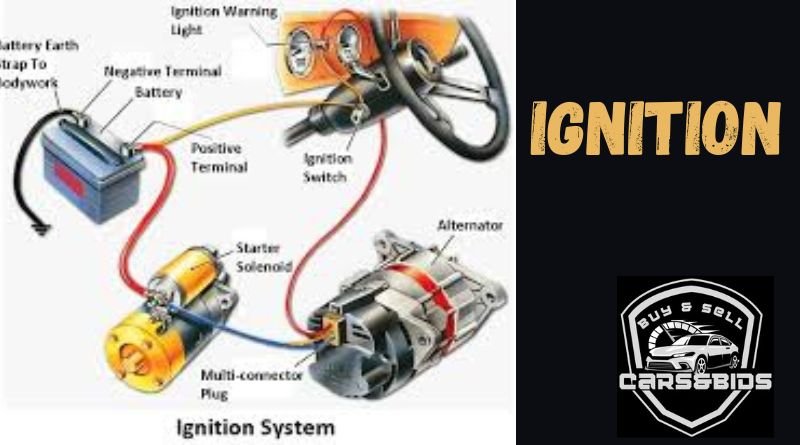Ignition systems play a crucial role in the operation of internal combustion engines, serving as the vital mechanism that initiates the combustion process. As vehicles evolve with technological advancements, understanding the intricacies of ignition systems has become more essential than ever. This article explores the components, types, and functioning of ignition systems, alongside the latest innovations and their impact on engine performance.
What is Ignition?
Ignition refers to the process of igniting the air-fuel mixture in an engine’s combustion chamber. This process is fundamental to engine operation, as it generates the power necessary for movement. The ignition system is responsible for generating the spark that ignites the air-fuel mixture, leading to combustion. A well-functioning ignition system ensures that an engine operates efficiently, maintaining optimal performance and fuel efficiency.
Key Components of Ignition Systems
An ignition system is composed of several critical components, each serving a unique function in the ignition process. Understanding these components is essential for diagnosing and repairing ignition-related issues in vehicles.
Spark Plug
The spark plug is arguably the most recognizable component of an ignition system. It generates the spark that ignites the air-fuel mixture. When the ignition coil sends a high-voltage current to the spark plug, it creates a spark that bridges the gap between the electrode and the ground. Spark plugs must be maintained and replaced periodically, as worn-out plugs can lead to misfires and reduced engine performance.
Ignition Coil
The ignition coil transforms the low voltage from the battery into a high voltage sufficient to create a spark at the spark plug. Typically, ignition coils operate on the principle of electromagnetic induction, using a primary and secondary coil to increase the voltage. Modern ignition systems often utilize coil-on-plug (COP) technology, where each cylinder has its ignition coil, leading to more precise spark timing and improved efficiency.
Distributor
In older ignition systems, the distributor plays a vital role in directing the high-voltage current from the ignition coil to the correct spark plug at the right time. The distributor consists of a rotor that spins and connects with various terminals leading to each spark plug. However, in modern systems, distributors are often replaced by more advanced ignition technologies like distributor-less ignition systems (DIS) that enhance reliability and efficiency.
Types of Ignition Systems
Over the years, various types of ignition systems have been developed, each with its unique features and advantages. Understanding these systems helps in selecting the right one for specific vehicle applications.
Conventional Ignition System
The conventional ignition system, often referred to as a contact breaker or points ignition system, was common in older vehicles. This system relies on mechanical points that open and close to create a spark. While this system was effective in its time, it has largely been replaced by more advanced ignition systems due to maintenance challenges and reduced reliability.
Electronic Ignition System
Electronic ignition systems have revolutionized the way ignition works in modern vehicles. These systems utilize electronic components to control the ignition timing and firing sequence, improving performance and fuel efficiency. With no moving parts, electronic ignition systems are more reliable and require less maintenance compared to their conventional counterparts.
Distributor-Less Ignition System (DIS)
The distributor-less ignition system is an evolution of electronic ignition technology. DIS eliminates the need for a distributor by using multiple ignition coils and a control module to manage spark timing. This system offers several advantages, including reduced weight, increased reliability, and improved ignition timing accuracy. DIS systems have become the standard in most modern vehicles, contributing to better fuel efficiency and lower emissions.
How Ignition Systems Work
Understanding the functioning of ignition systems provides insights into their importance in engine operation. The process begins with the engine’s control module determining the optimal timing for ignition based on various factors such as engine speed, load, and temperature.
- Air-Fuel Mixture Preparation: The engine draws in air and fuel, mixing them in the appropriate ratio. The precise mixture is essential for efficient combustion.
- Ignition Signal Generation: The engine control unit (ECU) sends a signal to the ignition coil, indicating the timing for ignition. The ECU continuously monitors engine parameters and adjusts the timing as necessary.
- High-Voltage Generation: The ignition coil generates a high-voltage current when triggered by the ECU. This high voltage is essential for creating a spark strong enough to ignite the air-fuel mixture.
- Spark Creation: The high voltage travels through the ignition wires to the spark plug, where it jumps the gap between the electrodes, creating a spark.
- Combustion: The spark ignites the air-fuel mixture, leading to combustion. This process generates pressure that drives the piston down, creating power to turn the crankshaft and ultimately move the vehicle.
Importance of Ignition Timing
Ignition timing is a critical aspect of engine performance. It refers to the precise moment when the spark plug ignites the air-fuel mixture. Proper ignition timing ensures optimal engine performance, fuel efficiency, and reduced emissions. If the timing is too early or too late, it can lead to knocking, reduced power output, and increased fuel consumption.
Innovations in Ignition Technology
As technology advances, so do ignition systems. Recent innovations have focused on improving efficiency, reliability, and environmental impact. Some notable advancements include:
Smart Ignition Systems
Smart ignition systems integrate advanced sensors and artificial intelligence to optimize ignition timing and fuel delivery. These systems can adapt to various driving conditions, improving fuel economy and reducing emissions. By analyzing real-time data, smart ignition systems can make instant adjustments to enhance performance.
Coil-on-Plug (COP) Technology
As mentioned earlier, coil-on-plug technology replaces traditional ignition systems by placing an ignition coil directly on each spark plug. This setup minimizes the distance between the coil and the plug, reducing energy loss and improving spark consistency. COP systems enhance engine efficiency and performance, leading to better fuel economy.
Troubleshooting Ignition Issues
Ignition problems can manifest in various ways, from difficulty starting the engine to poor acceleration. Here are common signs of ignition system issues and steps for troubleshooting:
- Engine Misfires: If the engine misfires or runs rough, it could indicate a faulty spark plug, ignition coil, or wiring issues. Checking these components for wear or damage is essential.
- Difficulty Starting: A no-start condition may result from a failed ignition coil or spark plug. Testing these components can help identify the cause.
- Reduced Fuel Efficiency: If fuel efficiency drops unexpectedly, it may indicate ignition timing issues or a malfunctioning ignition system. Regular maintenance and diagnostics can help pinpoint the problem.
Maintenance of Ignition Systems
Regular maintenance is essential for ensuring the longevity and performance of ignition systems. Here are some tips to keep in mind:
- Replace Spark Plugs: Worn or fouled spark plugs can lead to misfires and reduced engine performance. Replacing them according to the manufacturer’s recommendations is crucial.
- Inspect Ignition Coils: Periodically check ignition coils for signs of wear or damage. Replacing faulty coils promptly can prevent further issues.
- Check Wiring and Connections: Ensure that all wiring and connections are secure and free from corrosion. Damaged wires can lead to inconsistent ignition performance.
- Regular Diagnostics: Conducting regular diagnostics using specialized tools can help identify potential issues before they become significant problems.
Conclusion
In conclusion, the ignition system is a fundamental component of internal combustion engines, responsible for initiating the combustion process that powers vehicles. Understanding the various components, types, and workings of ignition systems is crucial for anyone interested in automotive technology. With the continuous evolution of ignition technology, maintaining and optimizing these systems will remain vital for enhancing engine performance, fuel efficiency, and reducing emissions. Whether you’re a car enthusiast or a professional mechanic, staying informed about the latest innovations in ignition technology will help you appreciate the intricate details that make modern vehicles operate smoothly.
The ignition system, with its various components and technologies, highlights the significance of engineering in automotive design and functionality. By ensuring that ignition systems are well-maintained and understanding their operation, drivers can enjoy improved performance and longevity in their vehicles.
Read also:




